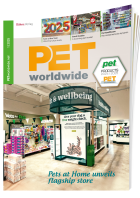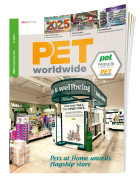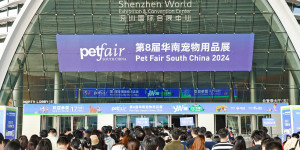If one looks at the international canine nutrition market, there were only two clearly discernible lines until a few years ago: mass-market products from the hypermarkets on the one hand, and higher-value products and premium brands from the pet stores on the other.
In southern and eastern Europe in particular, the hypermarkets set the tone for a long time when it came to the volume of pet food sold. However, thanks to the emergence of strong pet store chains, the situation in the market has now turned very much in favour of the pet supplies trade. This trend is clear in Spain in particular, as already reported in PET worldwide, and has been sharply accelerated by the appearance of the Kiwoko and Tiendanimal chains.
A direct consequence of this development, which is also leading to professionalisation of the pet supplies sector, is the emergence of special foods. This category includes feeding raw meat, something which is extremely popular in Germany, but also forms of nutrition utilising alternative sources of protein, such as insect-based food. Fields such as natural food are also being strongly promoted. One factor common to all these trends is that the speciality trade can continue to set itself apart from the hypermarkets.
A fluid market
Premiumisation, innovation and strategies towards higher specific value in dog food will be key to encouraging value growth. According to Euromonitor International, year-on-year growth in dog food sales slowed over 2015-2017.Much of this was due to an increase in urban living coupled with a slow recovery from the financial crisis. A decline in the overall dog population in some markets, such as France and the UK, as well as a shift towards smaller dogs has affected volume sales. Dog food manufacturers have responded by devising premiumisation strategies with added value offerings. Increasing segmentation is a key element in such strategies, with breed-, lifestyle- and age-specific products as well as the offer of multifunctional properties.
Buoyant mood in Bologna
Nearly 28 000 visitors attended the 20th edition of Zoomark from 15 to 17 May. The Italian pet supplies fair thus impressively cemented its reputation as …
Paula Flores, head of pet care at Euromonitor International, comments: "Dog food is largely comprised of premium pet food, particularly in North America, where niche products often experience fast growth. This was the case with freeze-dried and raw foods, which are perceived…

 Menü
Menü








 1/2018
1/2018













 Newsletter
Newsletter